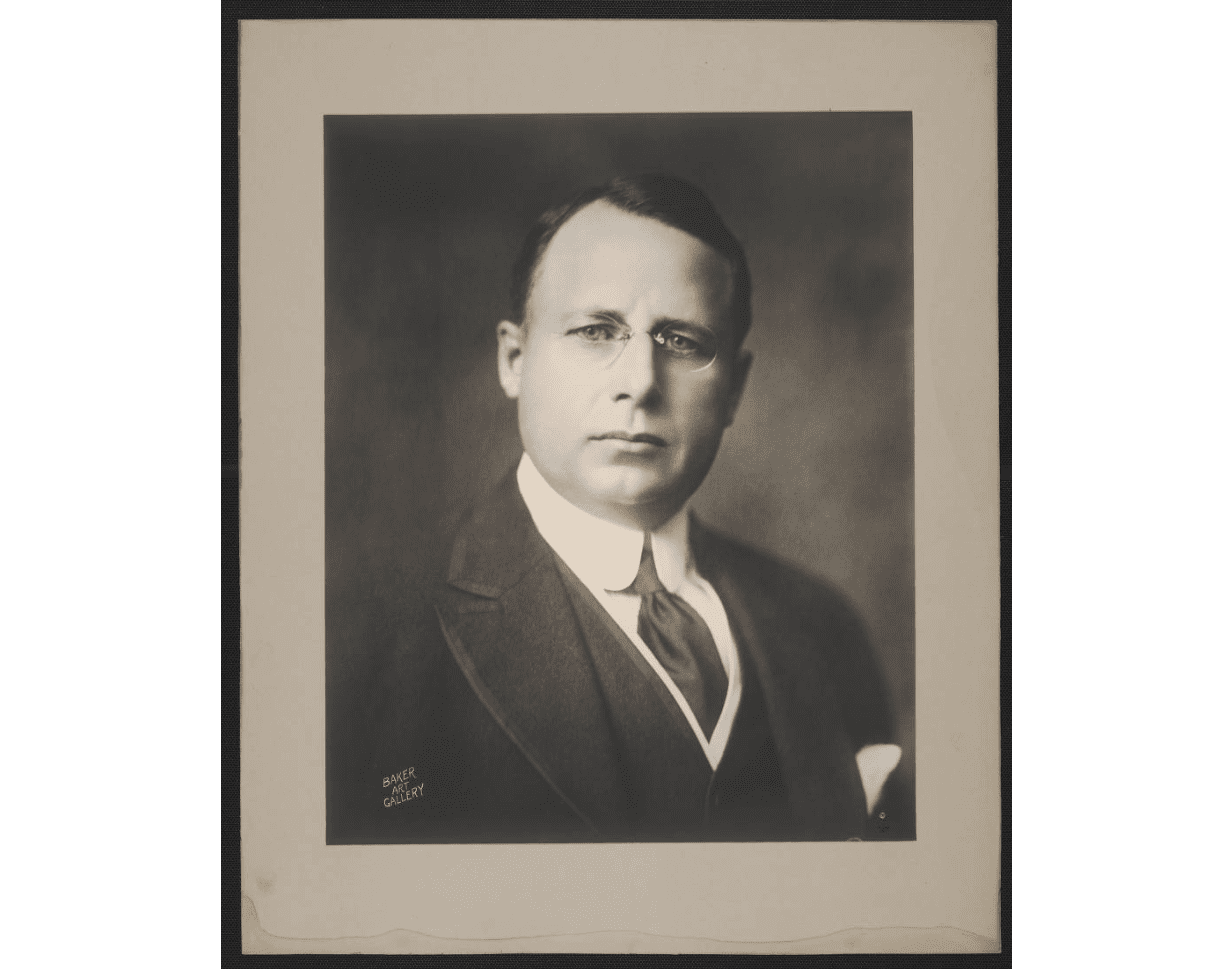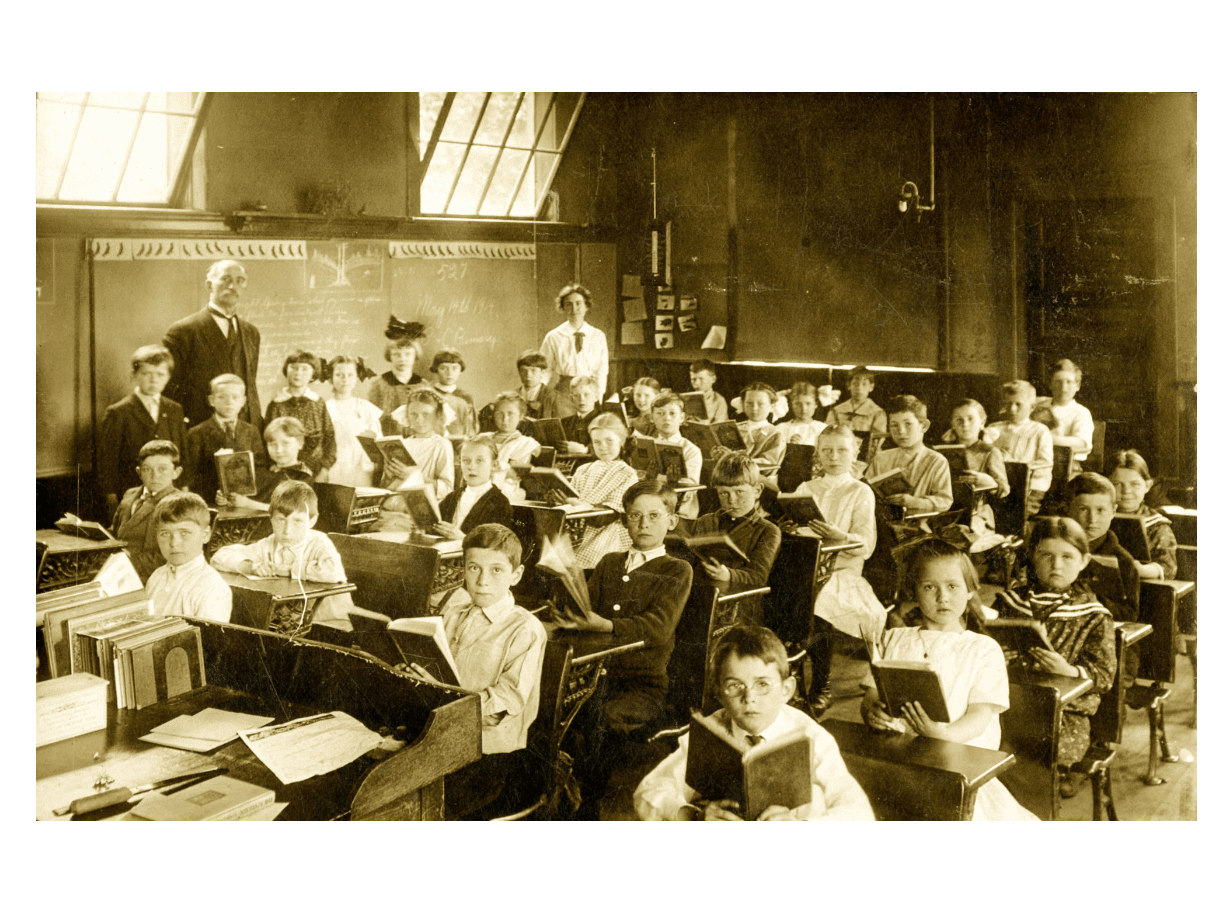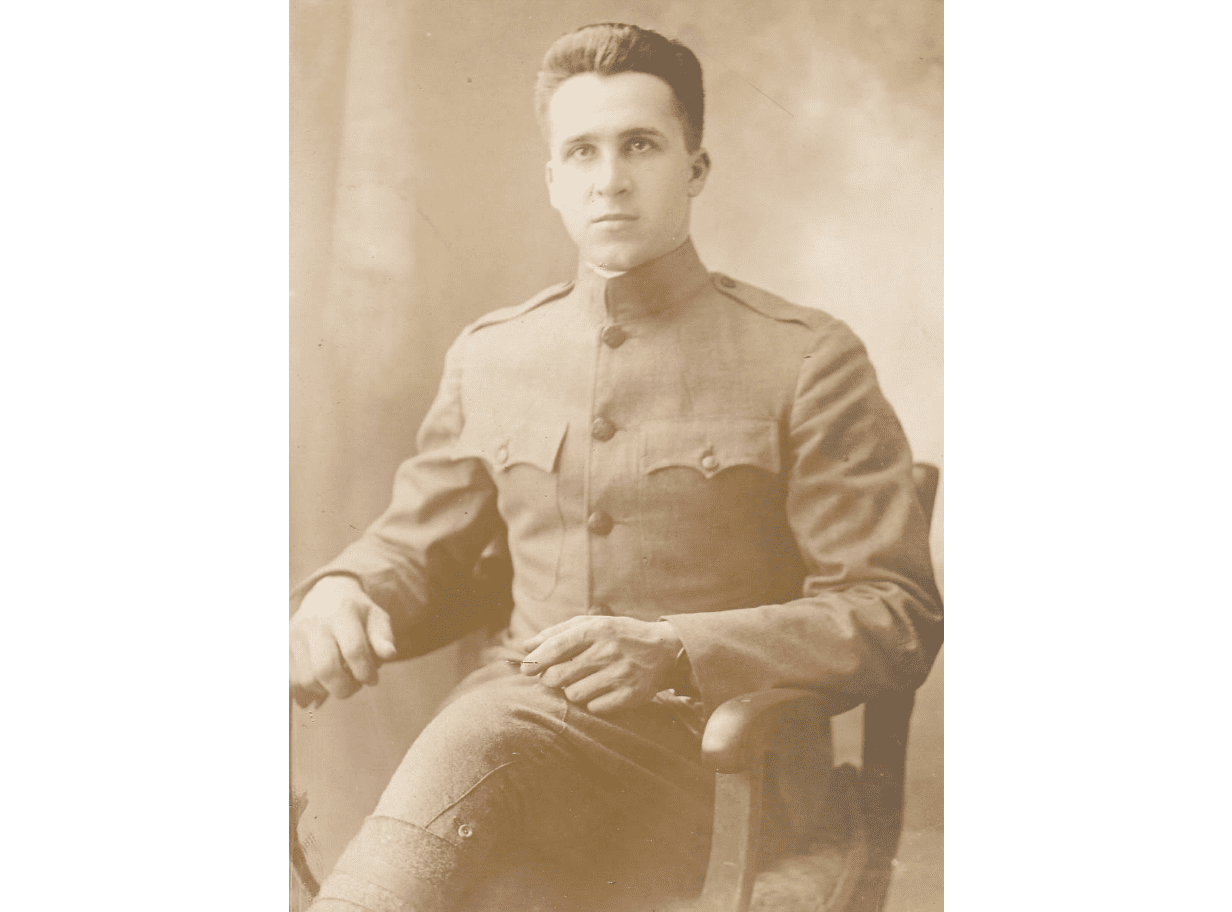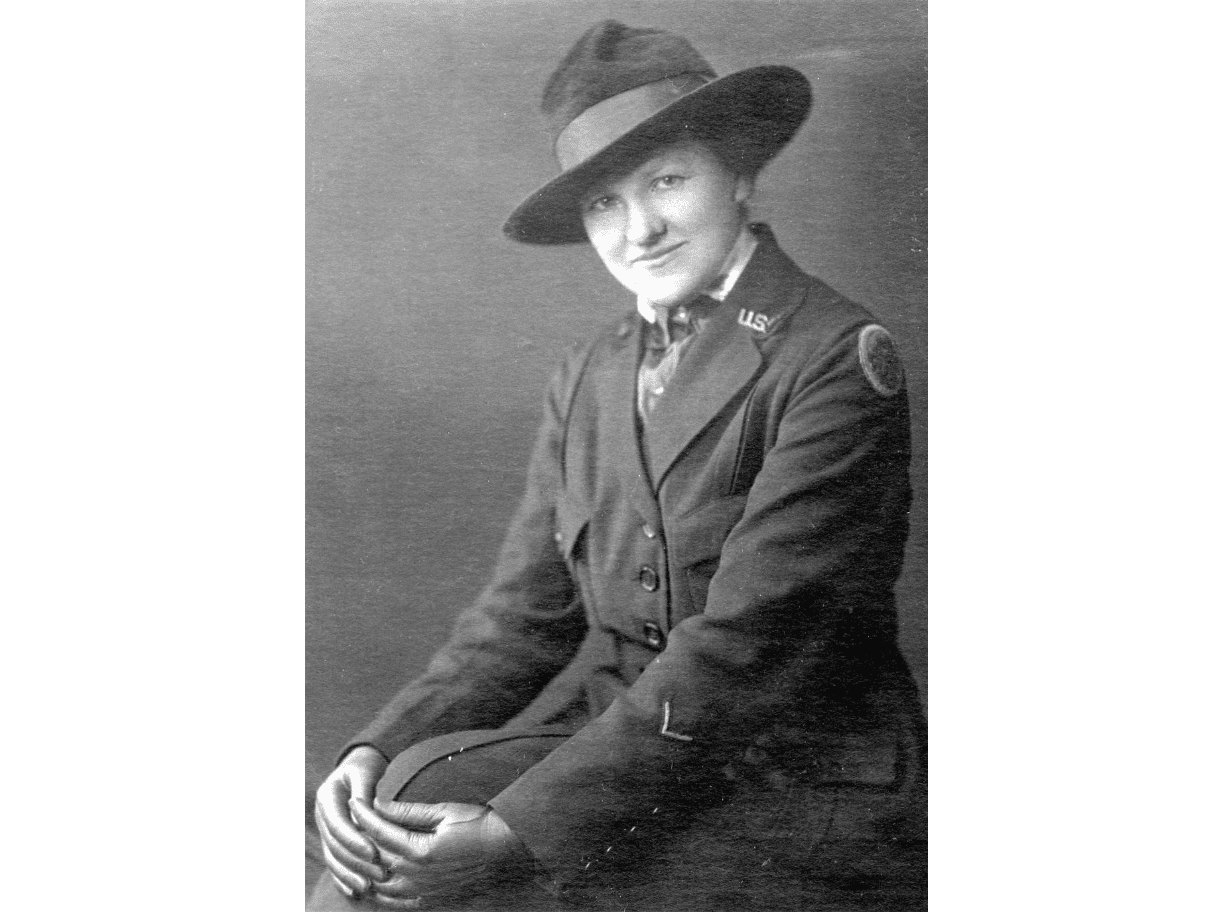[This page focuses on an event described in Elinor Bonney’s diary in November 1918. and December 1918, and a genealogy snapshot with information about the people mentioned in the diary. The diary entries are in the two pages for each month. The Spanish Flu occurs when the Bonney household is almost empty nested. Not only did their youngest, Nellie, come of age and begin to have a boyfriend. But the parents and Gertie are still away in Isle of Pines Cuba. They come home at almost the worst time, having been almost quarentined in Cuba due to plague. So the parents and Gertie do return and Elinor and Elbert remain at the house, but Audrey and her daughter Martha and Frank and his children and wife all end up coming back to the homestead at 760 Georgia Ave because they need care for the flu which Elinor provides. (see diary entries)]
Posted March 19, 2020
By Kieran Robertson
This blog post will take a look at a historic pandemic in Ohio. As our lives change to fight COVID-19, this can be a tough topic. Please put this post aside for later if the topic is too heavy to carry at the moment.
Just over 100 years ago, as World War I came to a close, soldiers, malnourished and living in cramped and dirty conditions, began contracting what they were calling “la grippe” (a typical name for a more routine and recoverable respiratory illness). Many recovered within a few days, and no one was taking the illness seriously as issues of war and peace held the day. The disease was first reported in Spain. As the Spanish were one of the only affected nations not imposing wartime censorship, Spanish journalists were the only ones accurately reporting the threat. This unequal reporting made it seem as if the disease was beginning in Spain. In fact, many other countries were suffering a similar fate.
Researchers are not certain where the Spanish Flu began, but there is actually a fairly strong case for its origin in the United States, specifically Kansas. At Fort Riley in March 1918, 500 soldiers were hospitalized within a week. The troops from this camp were then mobilized to the European front, where they brought the disease with them. Here it would mutate and become much more deadly. As the war ended and soldiers returned home, they brought the Spanish Flu with them to their families and friends. This flu caused soreness and tiredness, a cough, loss of appetite, and sweating. It was particularly deadly for people in their 20s and 30s. It often lead to pneumonia, so many deaths were incorrectly reported as simply pneumonia related with no mention of the flu. The Spanish Flu came back to the United States through a port at Boston Harbor. At the time, it wasn’t understood that this flu had actually originated in the US, traveled abroad, mutated, and returned. These new cases were being treated as the first arrivals on American soil.
The experience across Ohio during the Spanish Flu was not universal. Midwestern states, like Ohio, knew the disease was coming from the coast by late September, but took a minute to act. Governor James Cox decided it would be best for individual local governments to make decisions for their citizens. However, on October 8th the Ohio Department of Health did begin making recommendations to close public gathering places (retail stores never completely closed in Ohio, although many cities imposed time restrictions), and on October 10th, Cox and his team met to write and release “Instructions to Local Health Officers for the Prevention and Control of Influenza,” highly suggesting that public places close when influenza arrived.
The experience across Ohio during the Spanish Flu was not universal. Midwestern states, like Ohio, knew the disease was coming from the coast by late September, but took a minute to act. Governor James Cox decided it would be best for individual local governments to make decisions for their citizens. However, on October 8th the Ohio Department of Health did begin making recommendations to close public gathering places (retail stores never completely closed in Ohio, although many cities imposed time restrictions), and on October 10th, Cox and his team met to write and release “Instructions to Local Health Officers for the Prevention and Control of Influenza,” highly suggesting that public places close when influenza arrived.
Ohio’s major cities reacted to these closure orders at varying paces. Cincinnati had already closed most public gathering places on October 5, Dayton closed with the October 8th order, Columbus and Cleveland started to fall in line and got everything closed by the 14th, Toledo received the state order a few days late, but started closures once they got word.
James M. Cox served as Governor of Ohio from 1913-1915 and 1917-1921. From Ohio Memory
No one was happy about the closures. Cincinnati theatres convinced the city to stay open through Sunday, October 6th so that their current shows could finish their run. Columbus’s Health Officer, Dr. Louis Kahn closed theatres just before the Governor’s suggestions were issued. However, the Columbus Chamber of Commerce asked that a previously planned concert at Memorial Hall be allowed to go on, because only a higher class of person would attend (and assumedly, they would not spread disease). In Cleveland, police arrested various people breaking public gathering laws, including a group of Jewish men holding religious services, a candy shop owner and their patrons, and a gambling game (the gamblers insisted that they were not gambling, but the police insisted that was not why they were being arrested).
In Dayton, Health Commissioner Dr. A.O. Peters reminded his residents, “While the hardship [of the regulations] are working upon some people… is unfortunate, it cannot be obviated. The health of the city is of prime importance and just as soon as conditions become such as to justify the removal of present restrictions, they will be revoked.”
One particular issue in almost every city was the closing (or non-closing) of saloons. Saloons, like restaurants or drug stores, were often one of the last buildings to remain open. Sometimes it was difficult to tell a saloon from a restaurant, and many working class people were able to get affordable meals at a saloon that they could not get elsewhere. This made the saloon, despite its perhaps salacious reputation, a necessary public good. There were some new rules to make sure the saloon was serving its public good- in Cincinnati saloons were asked to bottle any alcohol and only sell it for take away, as to limit any crowds.
In many cities, there were residents that took offense to the saloons staying open, especially ministers who had had their church doors shuttered. In Cleveland, a group of 100 clergy broke the rules of social distancing and organized a door-to-door protest in the name of prohibition. There is no data recording any disease spread this may have caused. In Toledo, saloons did close, but creative residents found another way. The Mayor of Toledo was only able to close bars in his own jurisdiction- not in any other townships in Lucas County. Residents began going out to the country to get a drink. Initially country businesses enjoyed this boom, but as the disease spread and anger from Toledo officials grew, township governments agreed to close the doors.
Another hard decision for city leaders was the closure of schools. Leaders may not have understood this at the time, but because the Spanish Flu was particularly rough for younger people, this decision was key. Most city school boards and health officials watched the schools closely, waiting to see the moment they would need to close. In Toledo, the head school physician decided that during a regular diphtheria screening that fall, students would also be screened for Spanish Flu. Any absent student would receive a home call from a school nurse. This only lasted so long. Once the state suggestions for closures were issued, schools closed in Toledo.
Cleveland students got a bit tricky and forced their schools to close, not unlike the students in Wuhan who recently spammed their long-distance school app with one star reviews, hoping to get it deleted from the app store (some things just don’t change). Cleveland announced that schools would close once the absence rate reached twenty percent of the student population. In a twist that shocked only the adults of the city, that rate was quickly reached. The schools were closed, and teachers were asked to check in on the students who had been out. Finding that a majority of these students had simply played hooky, the city decided to open the schools again. Unfortunately, a number of real illnesses developed and the schools’ doors stayed shut.
An albumen print of an unidentified classroom of elementary-age children sitting at their desks with their textbooks in hand while their teachers look on. The date of May 14, 1914 is written on the chalkboard. From Ohio Memory
Without the technology that today’s students enjoy, it was hard to hold classes without students in the classroom. (Although some private schools in Cincinnati did continue coursework via correspondence between students and teachers.) In almost every Ohio city, when the flu began to subside and public places opened up, schools did too. However, students began falling ill, and the schools had to close again. In some cases, anyone under the age of 16 was also banned from public places. Most restrictions lifted around New Year’s Eve. The Spanish Flu continued to spread until the end of the winter, but not nearly at the rate it had before cities were shutdown.
Because the Spanish Flu began among soldiers, it continued to affect them at a high rate. For historians researching WWI, it is not unusual to go looking for a soldier’s military record and find that they died not on the battlefield, but sick in bed. Ohio soldiers at Camp Sherman in Ross County were infected at such a shocking rate, that the nearby community of Chillicothe attempted to quarantine themselves from the camp.
Camp Sherman quickly became a very dark place during the summer and fall of 1918. About 5,686 military personnel fell ill, with 1,777 succumbing to the Spanish Flu. This number was so high that the nearby city of Chillicothe had to allow some breaks in their quarantine so that soldiers could use the Majestic Theater as a makeshift morgue. Soldiers’ bodies often had to travel a distance to get home to their families, so nurses began embalming the bodies that were “stacked like cordwood” at the theater. This meant bodily fluids running through the nearby alley that still bears the name “Bloody Alley.” Prepared bodies were taken back to camp by wagon as funeral marches rang out through the city.
Because this flu began amongst soldiers and many of the nation’s medical professionals were serving in military capacities (and getting sick), the United States quickly suffered a shortage of doctors and nurses. Dayton had 15 visiting nurses arrive to assist, but as they fell ill there was a desperate call for more trained professionals. One Red Cross registrar claimed that any woman “with her normal ‘horse sense’ ought to be able to do many things for the sick,” but this was not generally medically accepted advice.
Medical professionals and citizens alike did everything they could to keep from getting the flu. Sometimes they were on the right track, but often their attempts were fools errands since disproved by modern medical science. Many images from the Spanish Flu show people wearing masks, but we now know that most of these masks were not made of materials that could properly filter air for the wearer. In Cincinnati, as numbers of infection grew in the first week of imposed social distancing, the local health officer, frustrated that he could not yet open public gatherings again, blamed the rise on the burning of leaves, believing the disease was being carried on the smoke. He banned the burning of leaves, but it offered no real assistance.
Fortunately, most Ohio cities, and most cities around the nation, were on track with most of their preventive measures. Health officers correctly advised social distancing, closed places where the public gathered (Cincinnati even removed furniture from hotel lobbies to limit loitering), and isolated those who were falling ill.
Frederick Yeager was a World War I veteran from Perrysburg. He never made it out of Camp Sherman, dying of the flu in the epidemic of 1918. From Ohio Memory
Lois Ruth Campbell in United States Army Nurse’s Corps uniform, ca. 1918. Campbell was a nurse from Bellefontaine, Ohio. From Ohio Memory
As 1919 dawned, Ohio came out of quarantine and life began again. Unfortunately, the Spanish Flu had taken about 50 million lives around the world, more than the Black Plague. In Ohio, Cleveland was hit the worst, with a death rate higher than New York City or Chicago. Toledo escaped with the lowest death rate, losing only 311 per every 100,000 people. The choices that U.S. cities made (or didn’t make) during the Spanish Flu Pandemic, particularly regarding social distancing, have helped Governor Mike DeWine make informed decisions about his actions now, over 100 years later.
What we all can learn from Ohioans of the past who fought through Spanish Flu is this- Ohioans have been here before and survived. As you settle into your new routine, perhaps working from home or home schooling, remember that just over a hundred years ago, there was likely another Ohioan sitting where you are, with the same fears, concerns, and worries. They survived, and we will too.
Much of this blog post was written using the Influenza Encyclopedia provided by the University of Michigan Center for the History of Medicine. This amazing resource includes primary sources and essays covering the response of 50 different U.S. cities to the Spanish Flu. It is highly recommended reading! You can also find some more general information about the Spanish Flu from this article at Live Science.




